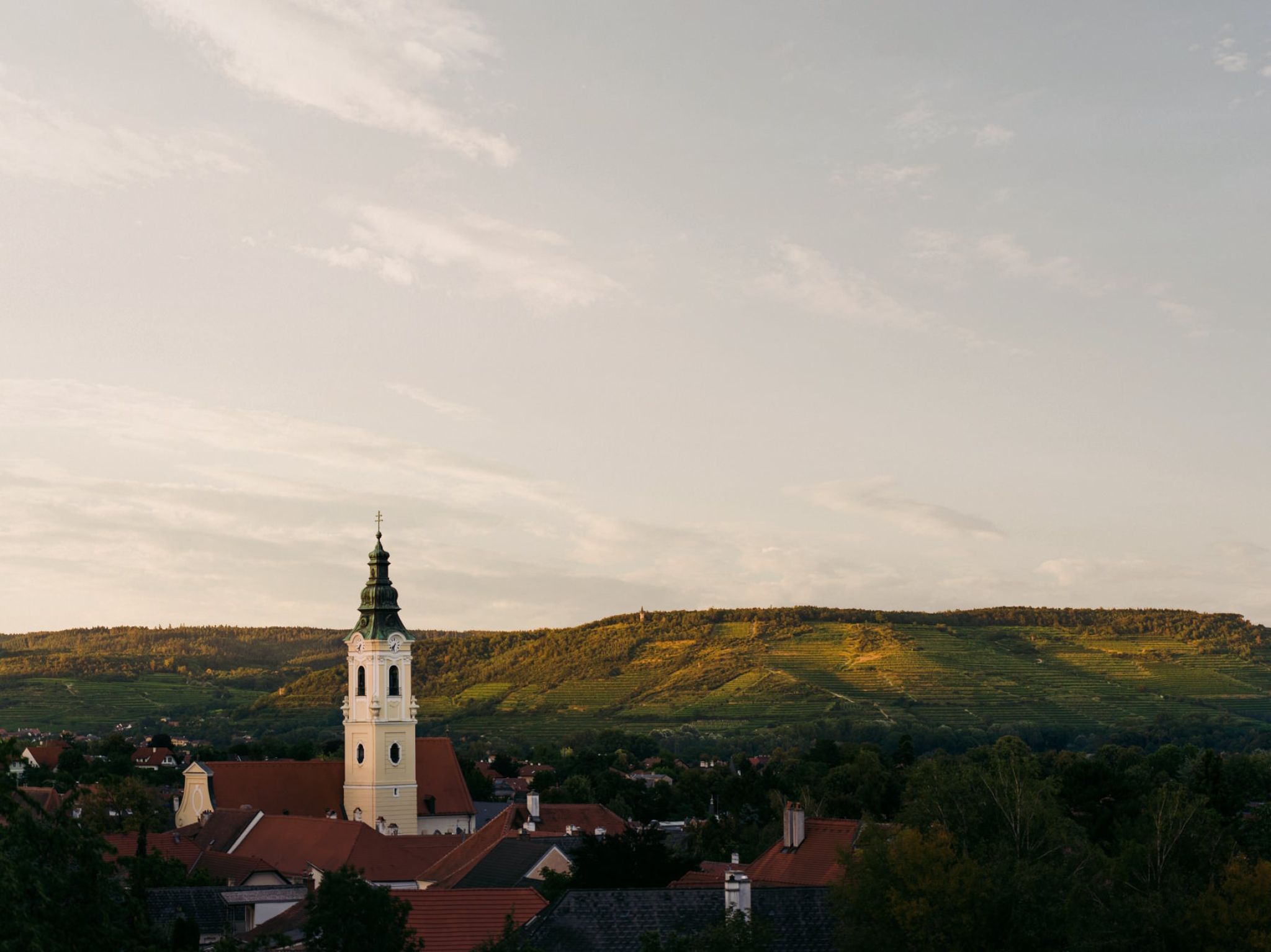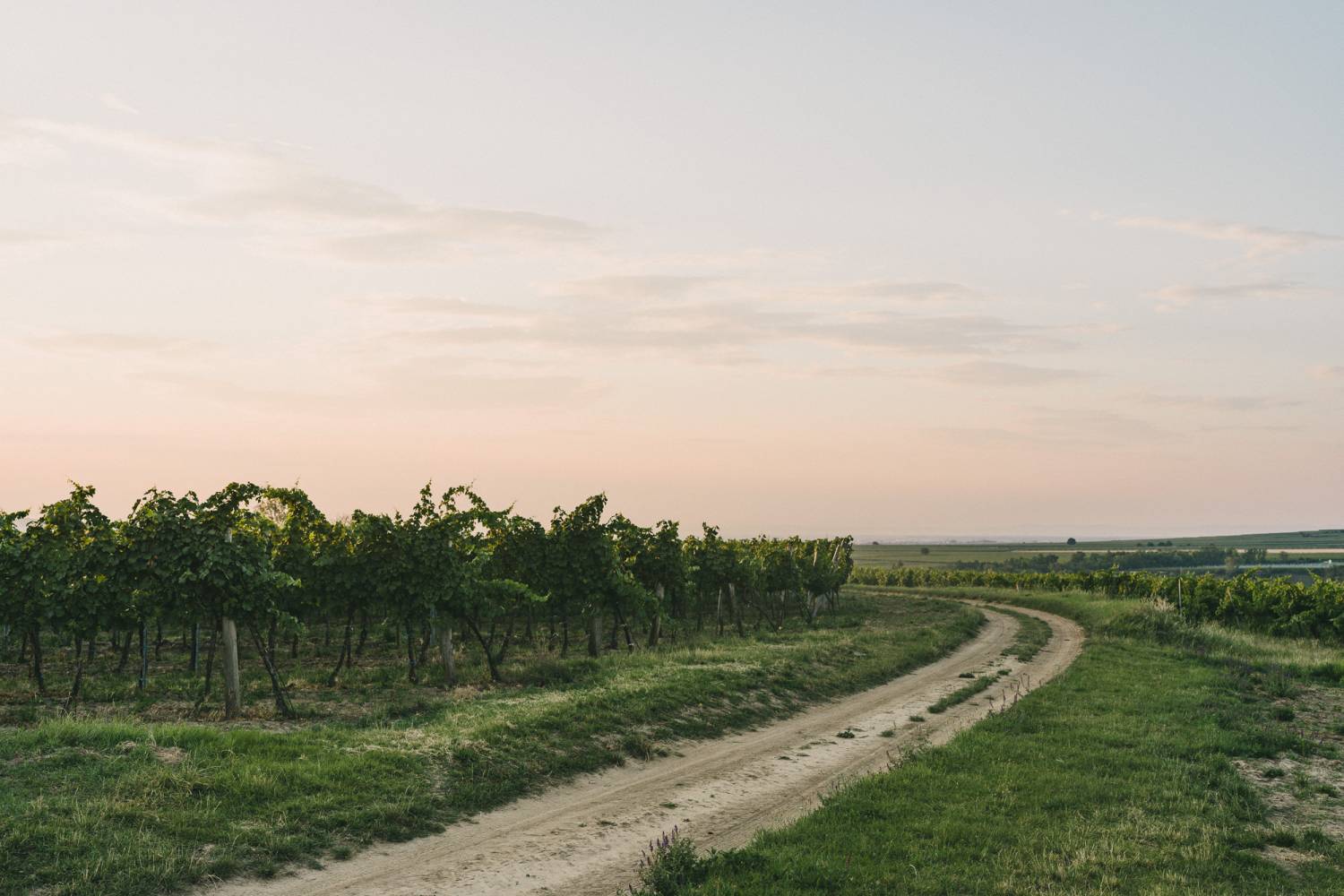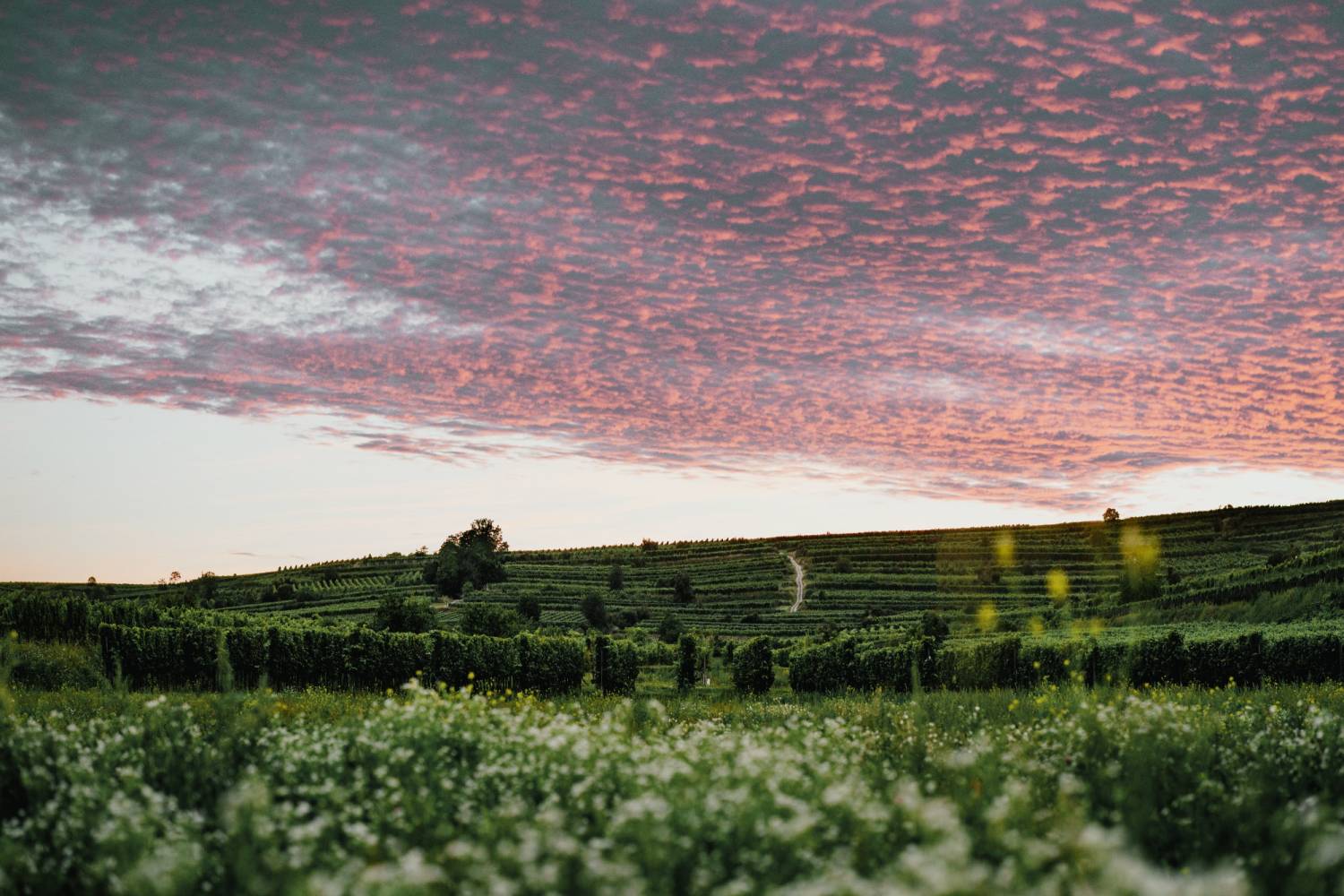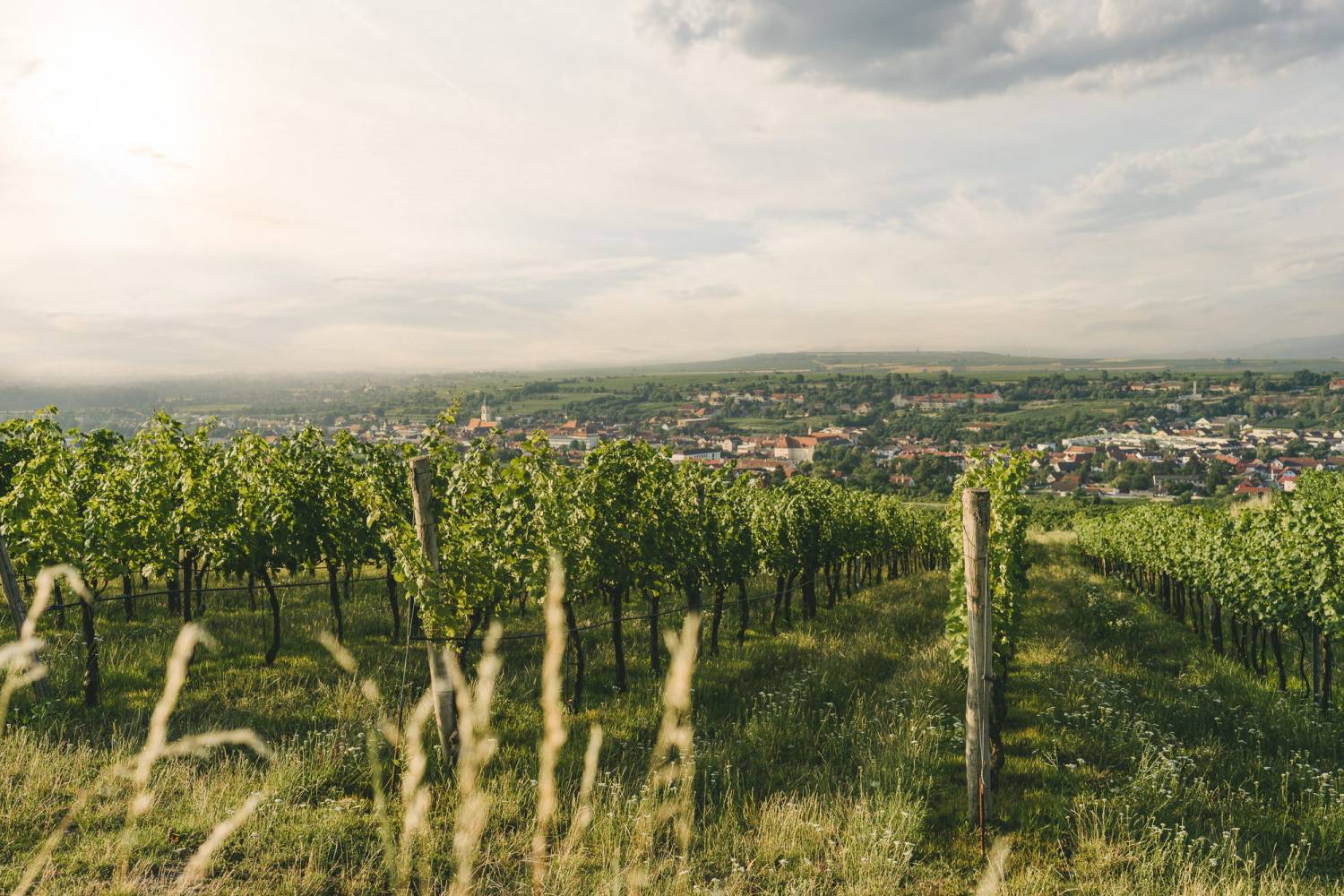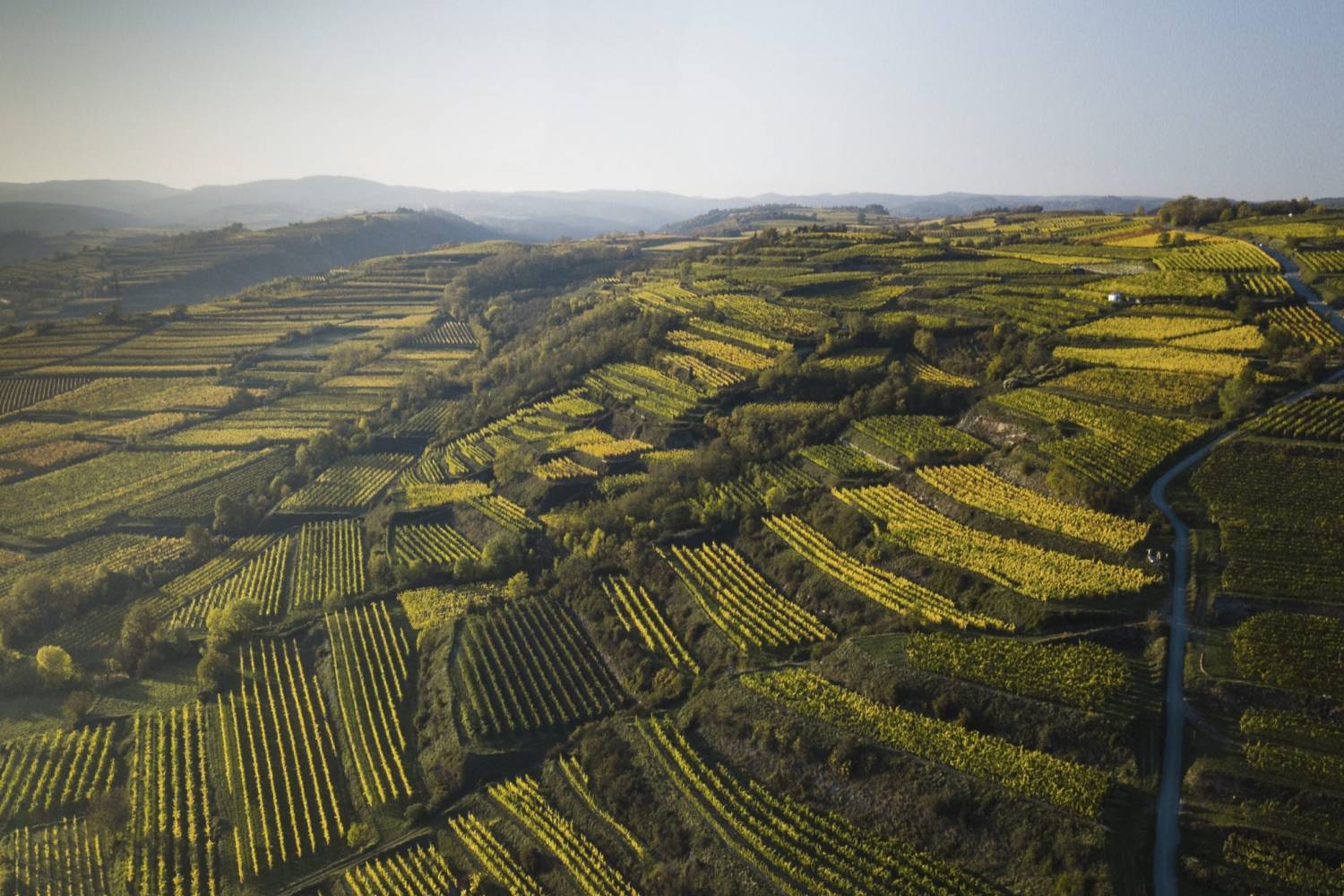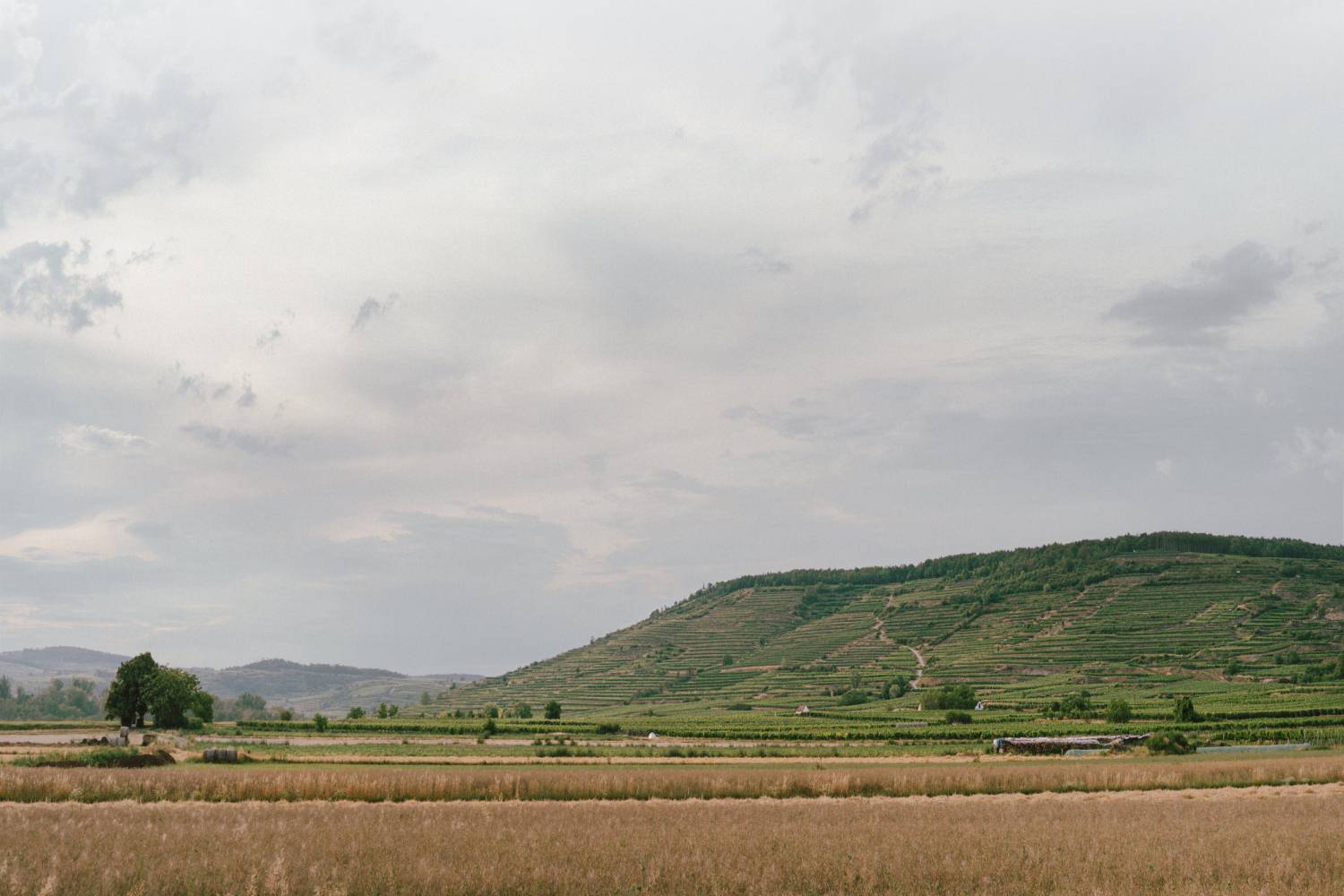The significance of the vineyard.
We know our vineyard sites and their peculiarities all too well. There is an age-old wisdom amongst vintners that there are some vineyards which yield exceptional wines year after year. The knowledge of these outstanding pieces of land has been passed on and deepened over countless generations. The vineyard classification that is currently carried out is the logical consequence of our centuries old wine-history. Together with nine like-minded colleagues from the region, we are the proud founders of the association Österreichische Traditionsweingüter (Traditional Austrian Wineries), established in 1992. The declared goal is to classify the most significant and outstanding vineyard sites along the Danube. A massive project! Today, we have numerous members and have been working on this task for 30 years.
Find out more: www.traditionsweingueter.at
The Thal vineyard holds a significant place in our hearts as it represents our ancient family heritage. Some parcels have been in family hands since the foundation of our estate. It was on this very land where our ancestors began cultivating vines in 1856.
The striking and gently sloping hillside is located just south of the estate and formed from a powerful rise of loess, that has been terraced by previous generations. The vines grow on a soil composition of calcareous loess intermixed with quartz-sand, creating a bright and cool vineyard soil. In 1936 Ludwig I. planted one of the earliest single-varietal Grüner Veltliner vineyards in Thal. These 80-year-old vines date back to a time, when yield was not the prime concern of vintners: narrow-shouldered grapes, rather loose-berried, with a distinct herbal and very 'down-to-earth' taste. Today, we continue the tradition of carefully selecting and cultivating these ancient and authentic vine genetics, ensuring their enduring presence in our wines.

More facts
| Vine age | 15-80 years |
| Soil | Loess, Quartzsand |
| Altitude | 230 - 280 m |
| Gradient | up to 23° |
| Orientation | S - SSW |
| Village | Langenlois |
| Location | 48°27'45.0"N 15°40'19.7"E |
The Kittmannsberg is located on a prominent high plateau in the west of Langenlois. With an altitude of up to 365 meters, it belongs to the highest vineyard sites in the Kamptal region. Its first mention in documents dates back to 1353 when it was referred to as 'Chotmannsperig,' a name likely linked to the original owner of this vineyard. It opens up like an ancient amphitheater, facing southeast towards Langenlois, and receives the first rays of sunlight in the morning. The characteristic bowl-shaped topographic depression creates an excellent microclimate that favors long ripening periods.
We cultivate several terraces, predominantly located in the upper third of the vineyard site. Here, our vines root in a soil with a particularly fine mineral structure, consisting of loess loam and calcareous clays. These are traces of a past, shallow sea (Paratethys) that extended to Langenlois. The Veltliners grown here are rich in extract, usually displaying a yellow fruit expression, and characterized by a silky-spicy minerality.
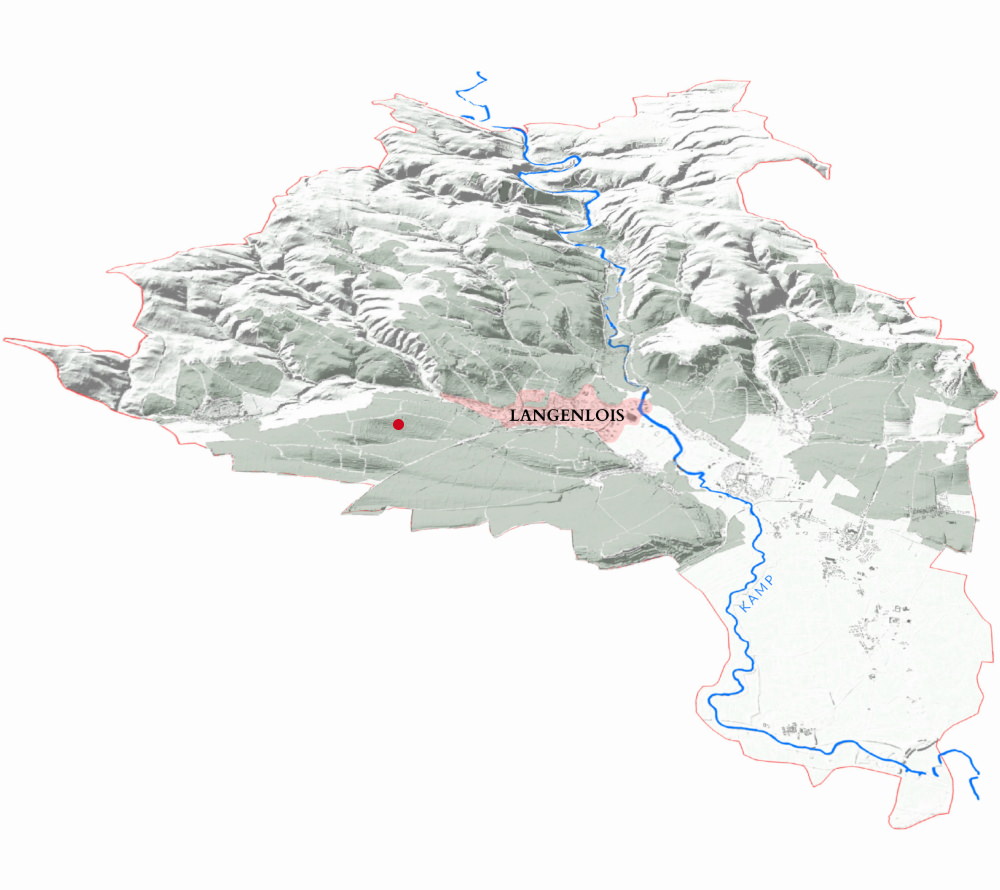
More facts
| Vine age | 30-50 years |
| Soil | Loess-loam, calcareous clays |
| Altitude | 280-345 m |
| Gradient | up to 17° |
| Orientation | SO-OSO |
| Village | Langenlois |
| Location | 48°28'18.2"N 15°38'46.9"E |
| Classification | Erste Lage |
Vines have been cultivated on the Schenkenbichl vineyard for many centuries. This slope is located just north of the town of Langenlois. The name has remained unchanged since its first written record in 1402 and likely originated from an old wine tavern (Schenke) situated at the foot of the hill (Bühel). Despite the intense sunlight, the west wind exposure helps maintain a relatively cool temperature on the south-facing slope. The vineyard is characterized by both small and large terraces, with our vineyards situated at the upper limit, approximately 315 meters above sea level. Here, our Veltliner vines thrive on metamorphic rock, predominantly dark amphibolite. The amphibolite bedrock is covered by a cambisol formed from mica-rich silicates. The rocky subsoil manifests itself in the form of deep, subtle fruit and a smoky salinity, which makes the Veltliner growing here unmistakable.
As you descend towards the lower end of the slope, approaching the town of Langenlois, you'll find an increasing presence of loess interspersed with numerous rocks. The bottom of the slope is home to the oldest Weissburgunder (Pinot Blanc) vines in the Danube area, planted by Dr. Bruno Hiedler in 1955. Here, we encounter the geological remnants of the old Loisbachtal (Lois Creek Valley). The gnarly vines root on gravel with calcareous loess running through it.
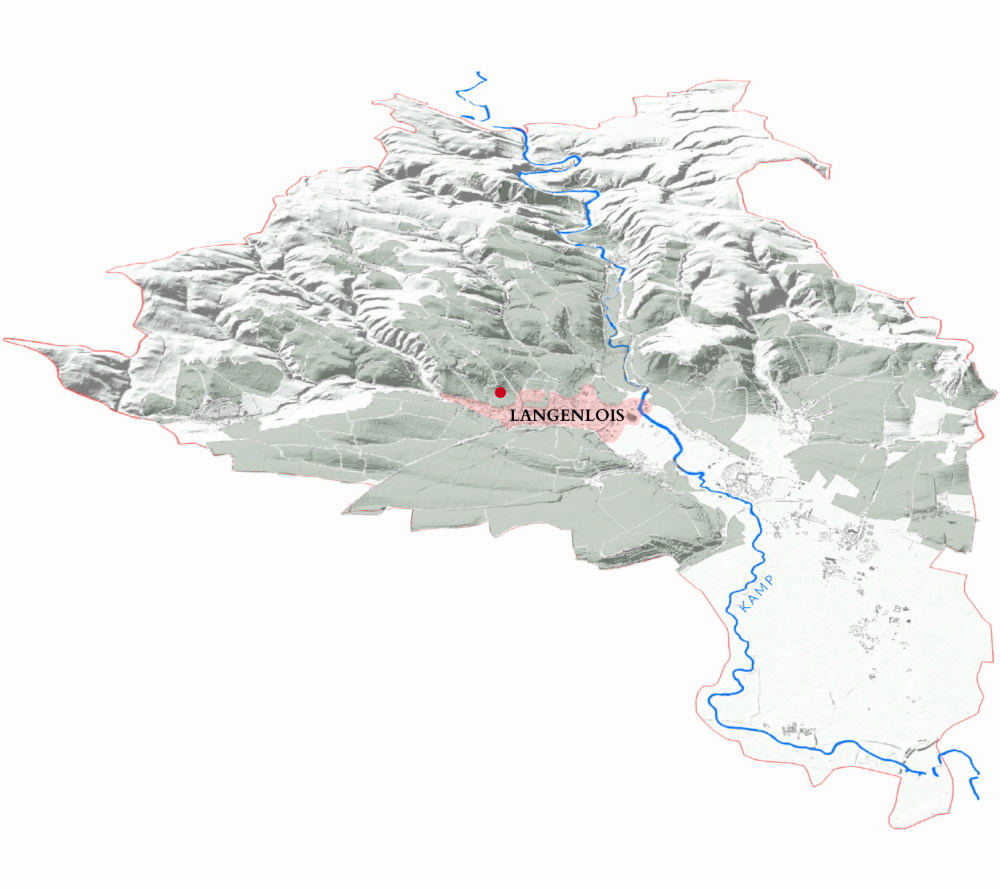
More facts
| Vine age | 20-60 years |
| Soil | Amphibolite, Gneiss, Loess |
| Altitude | 230-315 m |
| Gradient | up to 29° |
| Orientation | SSO |
| Village | Langenlois |
| Location | 48°28'55.0"N 15°39'53.0"E |
| Classification | Erste Lage |
With its unique geology and elevated position, the Langenloiser Käferberg stands out as one of the most remarkable vineyards in the Kamptal region. It is believed that the name of the site, first mentioned as "Cheuerperg" in 1317, refers to a previous owner. When viewed from the east, the ridge resembles the shape of a beetle's shield ("Käfer" in German), which could provide another explanation for its name.
The terraces and gardens are situated between 310 and 365 meters above sea level, facing south and southeast. The soil composition of Käferberg sets it apart from all other sites in Langenlois. Within a small area, one can find fragments of crystalline rocks such as amphibolites, gneisses, and mica slate, alternating with clayey sea sediments (clay marl) and rare gravels that were deposited in the ancient Paratethys Sea millions of years ago. They are stacked on top of sands or solid rocks of the Bohemian geological formation. Our vines thrive at an elevation of around 340 meters, specifically on two terraces on the southeastern slope of the site. Over the course of millennia, some loess has also been deposited here, enriching the soil with its calcareous elements. The small-sized grapes of the vines planted in the 1940s reach an exceptional density and concentration on this terroir. Thanks to the altitude, even in warm vintages and when harvested late, we can harvest grapes with good acidity. This results in a distinct salty-mineral freshness that creates a captivating and dynamic contrast in the wines of Käferberg.
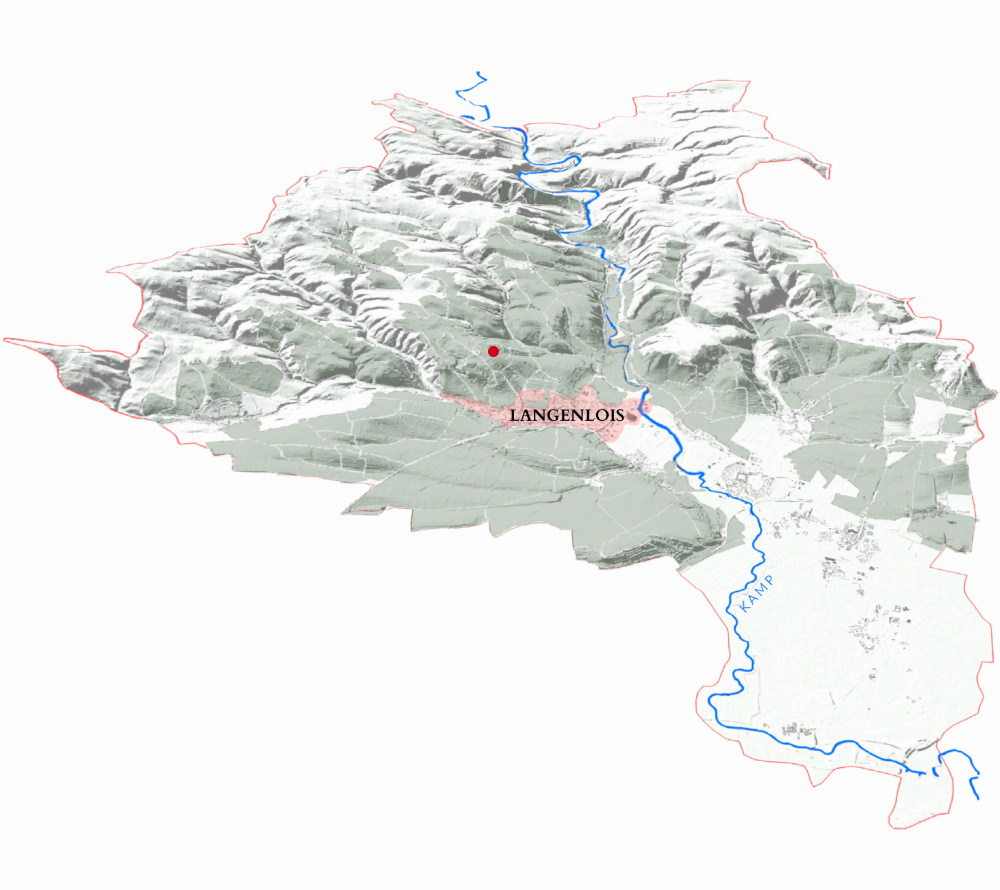
More facts
| Vine age | 25-85 years |
| Soil | Crystalline, Clay marl, Loess |
| Altitude | 310-365 m |
| Gradient | up to 19° |
| Orientation | S-SO |
| Village | Langenlois |
| Location | 48°29'36.6"N 15°41'15.2"E |
| Classification | Erste Lage |
This is the steepest vineyard in Langenlois, documented since 1394, then written as 'Stainhaws.' The name probably derives from the small dry-stone huts that served as shelters, and their remnants are scattered in the vineyards today. These huts were built with stones that resulted from the formation of the terraces and were also used to build the dry-stone walls. Until today, these small and partly narrow terraces shape the image of the steep south-facing slope.
The rocky subsoil consists mainly of gneiss and dark amphibolites, traversed by veins of quartz and feldspar. Only a few centimeters of humus-rich topsoil could hold onto the barren rock. The vines have to reach deep into the small crevices and fissures of the weathering rock to access the water veins. The rugged and rocky ground easily warms up in the sun, creating a warm-cold contrast between soil and air temperature in the early night hours. This microclimate, combined with the meager soil, provides the best conditions for cool and tensioned Riesling wines.
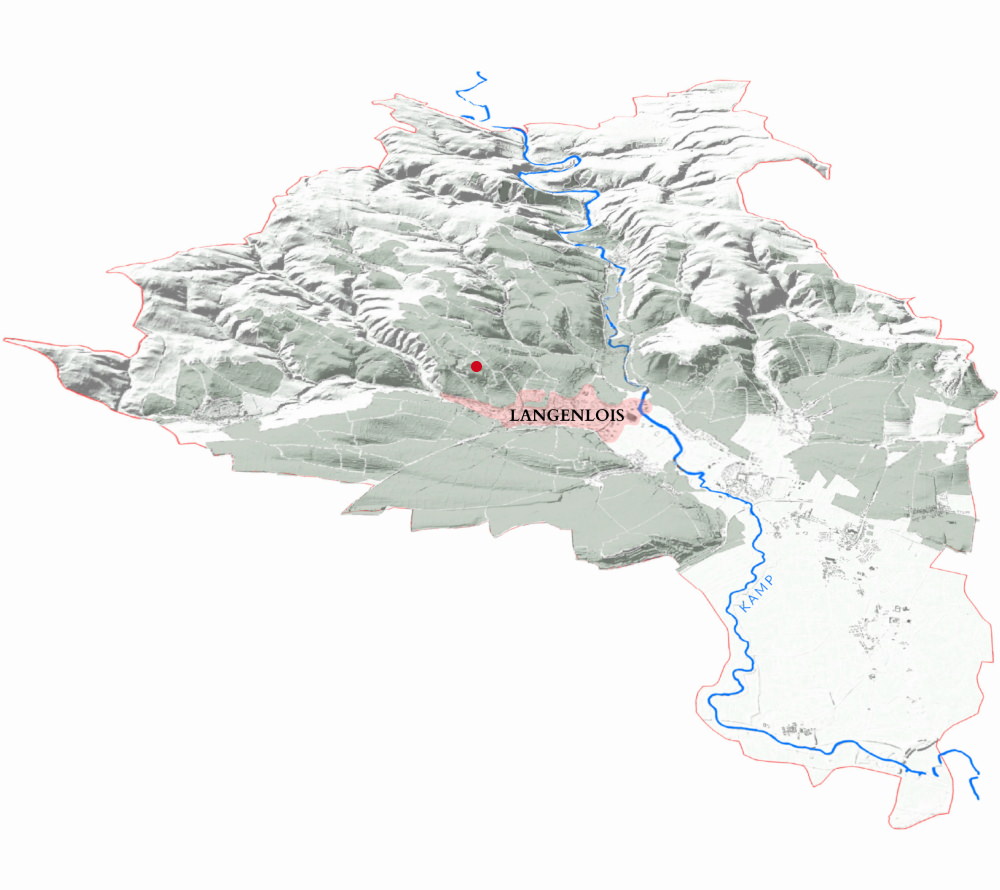
More facts
| Vine age | 20-45 years |
| Soil | Gneiss, Amphibolite, Quartz |
| Altitude | 230-360 m |
| Gradient | up to 29° |
| Orientation | S |
| Village | Langenlois |
| Location | 48°28'56.0"N 15°39'40.0"E |
| Classification | Erste Lage |
This vineyard site was first recorded in the archives as 'Gaizperch' in 1341. There are two possible explanations for the name: Firstly, a "Geiss" (goat) symbolized fertility in the past, and the vineyard might have been named due to its fertile soil and abundant harvest. Alternatively, goats (Geissen) might have grazed on the ancient terraces centuries ago. The true origin remains a matter of speculation.
The Gaisberg is a hillside vineyard that extends up to 335 meters, with a steep eastern slope facing the wine village of Strass and a slightly gentler southern exposure towards Kammern. Early in the morning, the Pannonian warmth from the southeastern Danube plain brushes over this exposed vineyard on its upstream journey, creating a milder microclimate and allowing the grapes to ripen a bit earlier. This historical significance earned the Gaisberg a prominent place among the most important sites in the Kamptal during cooler climatic phases.
The soil is highly diverse, comprising various crystalline and metamorphic rocks. We cultivate two terraces here: One in the upper third of the location, where our vines penetrate a sparse and rocky substrate of paragneiss. At certain points, marble, granite, and amphibolite lenses also emerge. Another smaller parcel lies on the southern slope, where the roots predominantly encounter a mixture of calcareous loess and crystalline debris. As a result, the Rieslings from here show more feminine contours, expressive fruit, and silky minerality.
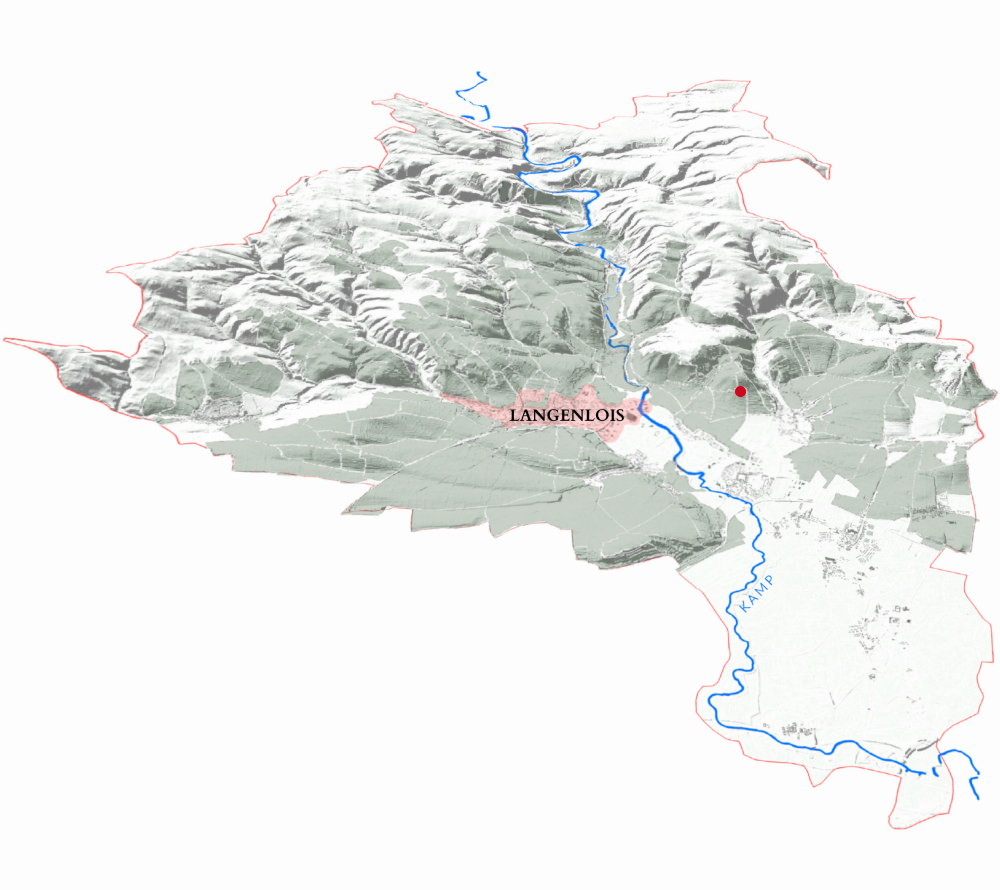
More facts
| Vine age | 30-45 years |
| Soil | Gneiss, Marble, Loess |
| Altitude | 210-335 m |
| Gradient | up to 25° |
| Orientation | SO-SW |
| Village | Strass, Kammern, Zöbing |
| Location | 48°28'35.0"N 15°43'24.5"E |
| Classification | Erste Lage |
Heiligenstein is one of the most renowned Riesling vineyards in Austria, and its authentic wines receive international acclaim. The first written mention of the vineyard dates back to 1280, referred to as "Hellenstein". For a long time, it was speculated that the name was derived from an earlier form of the German word "Hölle" (Hell), which seemed logical considering the intense sun exposure and the heat one would experience working on the south-facing terraces. In fact, however, “Hel” means “shiny, light” in Middle High German (ergo: the bright hill), and over the centuries the dialect turned Hellenstein into Heiligenstein (Stone of the Saints).
The geology of Heiligenstein is particularly fascinating and unique. It forms a geological island within Europe. The sedimentary layers, known as the "Perm of Zöbing," submerged deep beneath the Earth's surface approximately 248-290 million years ago before resurfacing in today's Kamptal region. These layers were exposed to desert climates and volcanic activity. The visible bedrock predominantly consists of reddish-brown sandstone with a high feldspar content, coarse conglomerates, and minor siltstone. Fossilized plant remains and boulders of volcanic quartz porphyries can also be found, providing the vines with a diverse array of micro-elements. The wines produced from this soil reflect this unique character and are known for their distinctiveness.
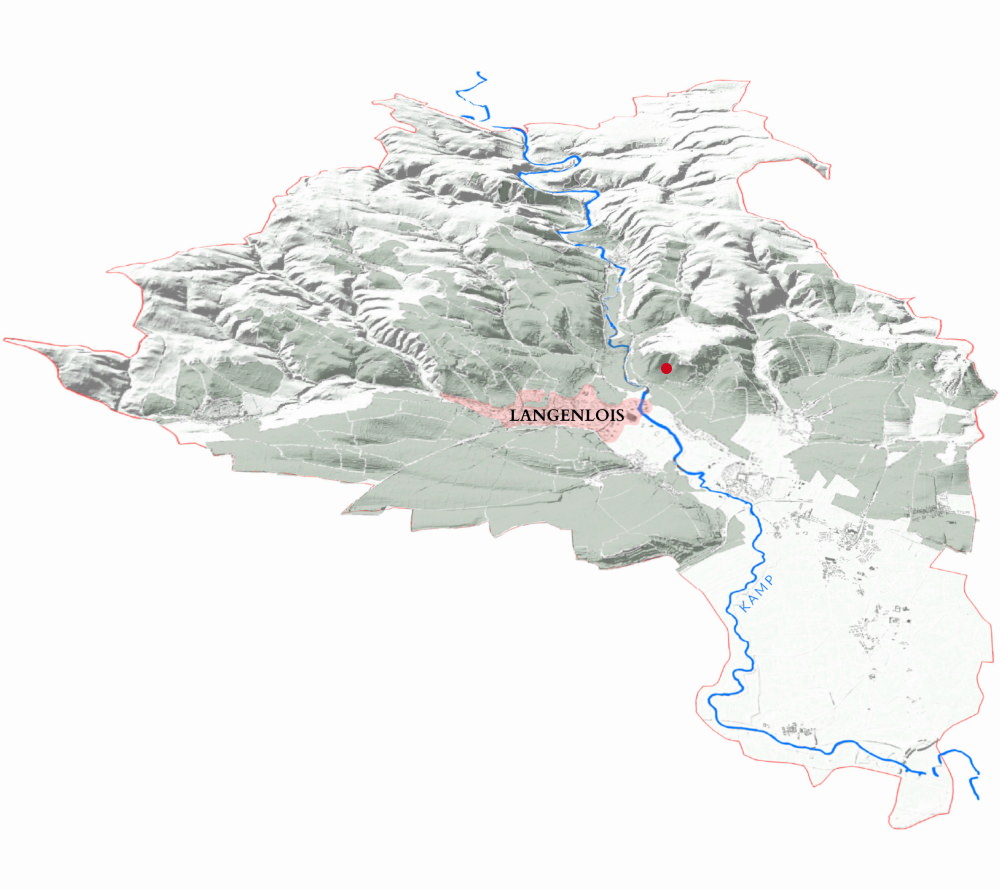
Wissenswertes
| Vine age | 30-60 years |
| Soil | Desert Sandstone |
| Altitude | 215-350 m |
| Gradient | up to 32° |
| Orientation | SW |
| Village | Zöbing |
| Location | 48°28'55.7"N 15°42'28.1"E |
| Classification | Erste Lage |
